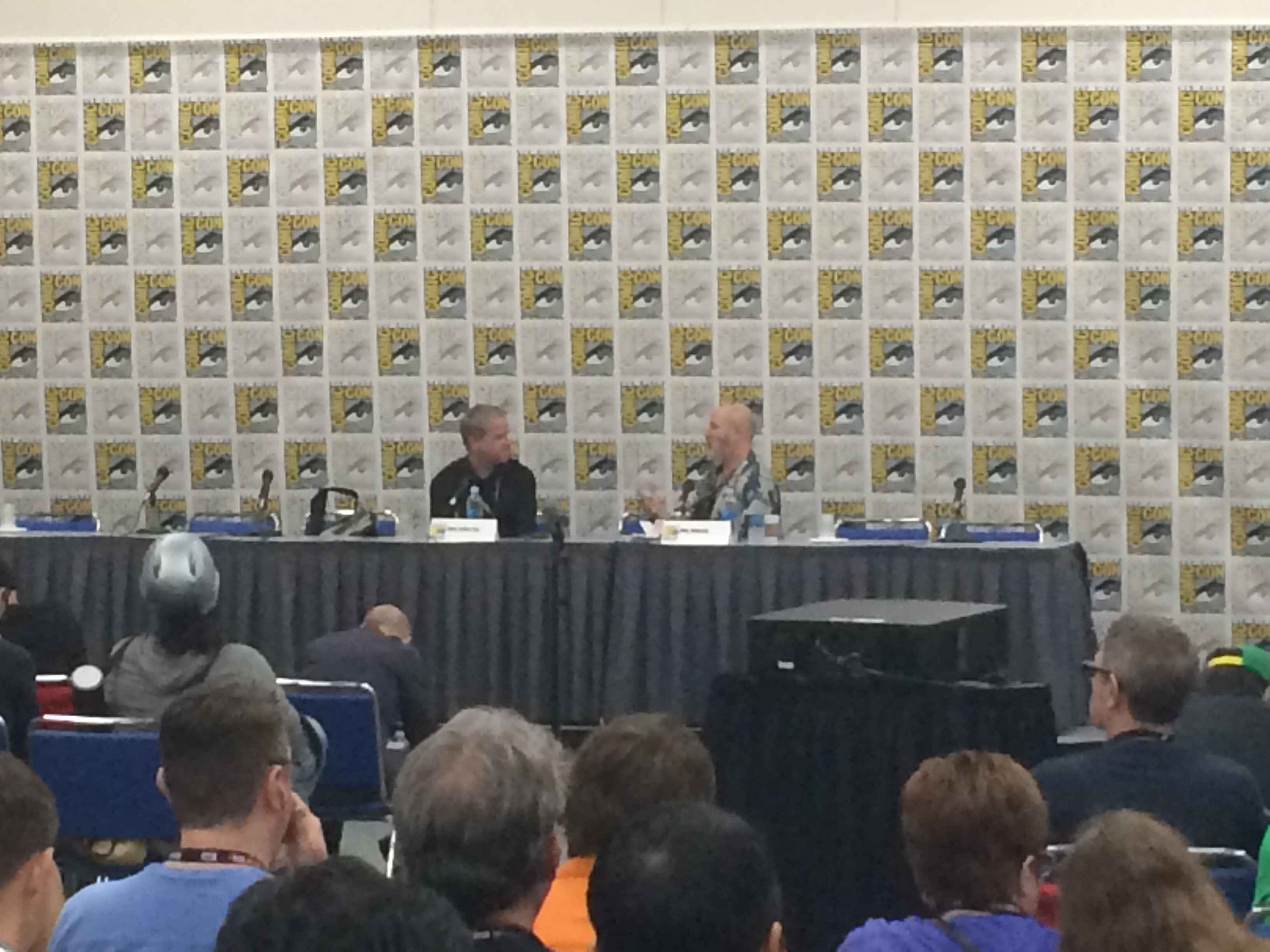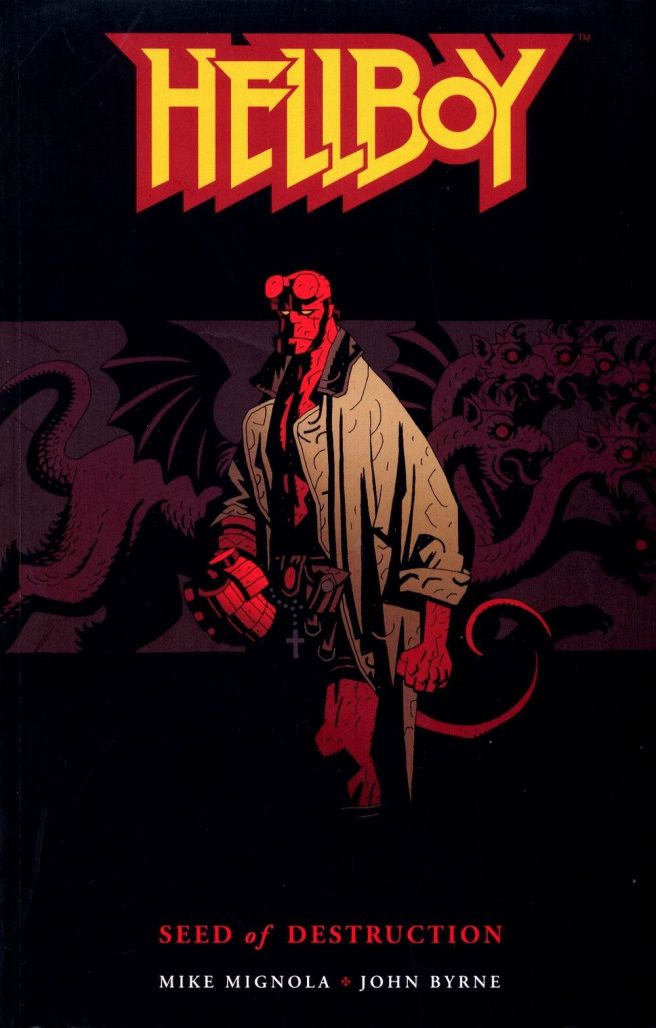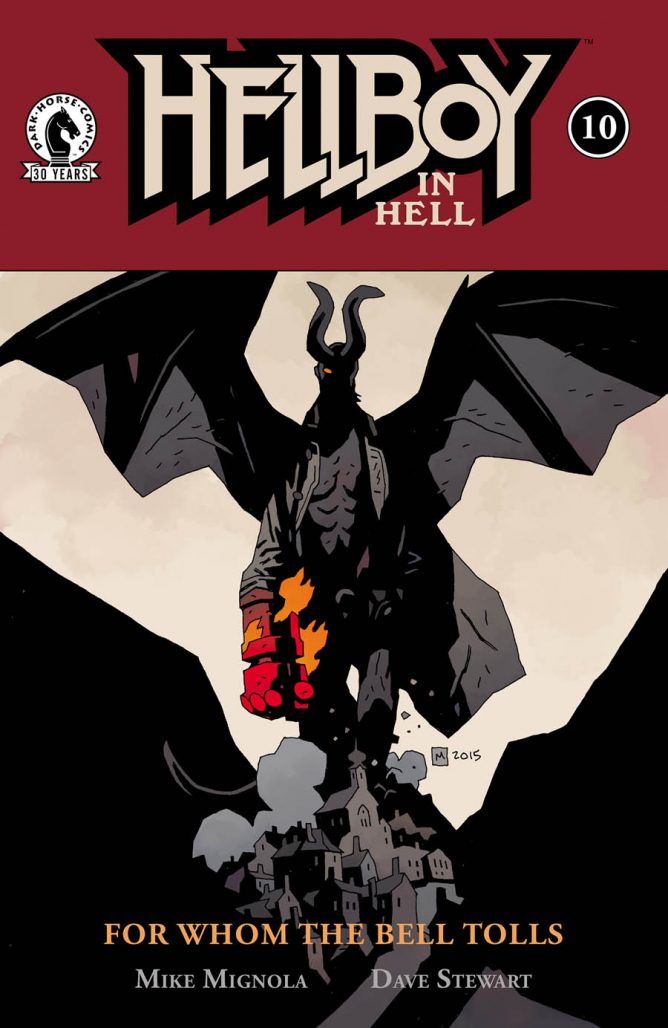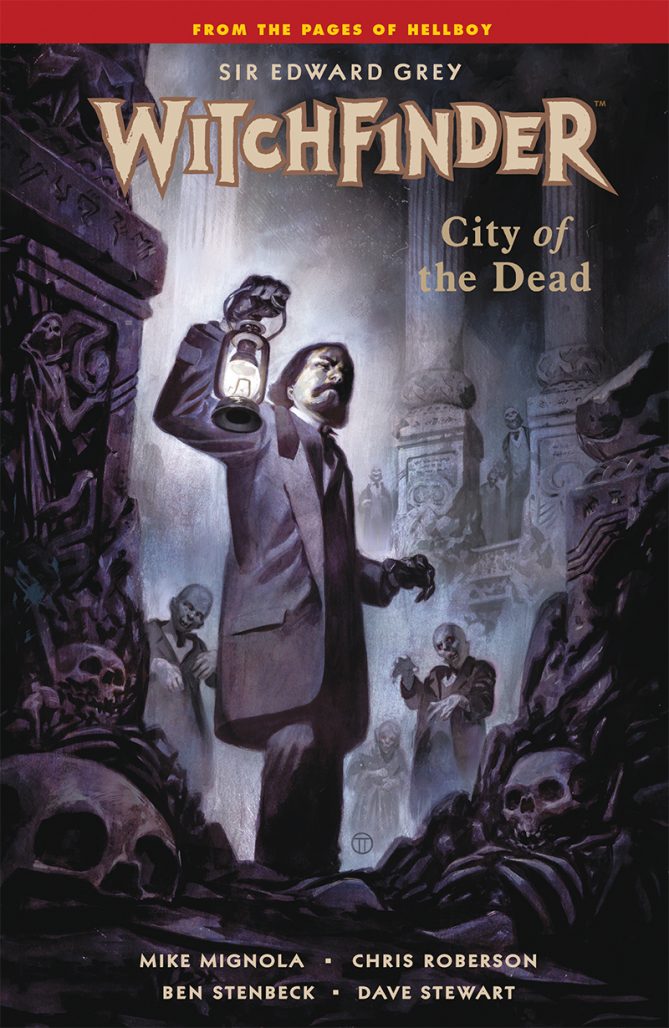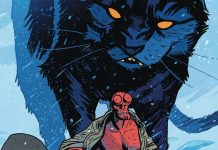At Friday’s Spotlight on Mike Mignola panel, SDCC attendees were treated to a Q&A session with the legendary writer/artist himself and the newest curator of his Hellboy Universe in writer Chris Roberson. This is an exciting time for the franchise, as it sees long-time Mignola collaborator John Arcudi step away from the B.P.R.D. series and hand over the co-authorship reins to Roberson and see him steer the direction of where the property and its associated series are heading. This was an excellent opportunity for Mignola fans to get some face to face time with both Mignola and Roberson and get their burning questions about Hellboy’s future answered.
But to start off, Mignola gave a state of the union of the series. To wit, Hellboy in Hell has wrapped up, but Mignola stated that we will soon see something related to that again. No other details were given related to this very tantalizing hint. In addition to that Hellboy finale, Arcudi’s run on B.P.R.D. ends in September with one more arc to follow after. The Abe Sapien series is also coming to a close.
So what will fill the gap given the upcoming paucity of Hellboy-related material?
As previously announced, The new Witchfinder series, City of the Dead, hits in August. Mignola was quick to call it “brilliant”. It will be followed by September’s Rise of the Black Flame, which details the history of the fanaticism that surrounds that long-standing villain. Additionally, Hellboy & The BPRD 1954 will also see release that month, and Mignola outright stated that it was a series that could theoretically continue up until 1994’s ‘Seed of Destruction’.
All three series will be written by Roberson, in collaboration with Mignola. But as Mignola relayed to attendees: 99 percent of this world will be under the control of Chris Roberson.
“Will there be more Hellboy? That’s my job.” Roberson said.
To which Mignola added that Hellboy has a distinct beginning and end, but “we are going to be perpetually doing stuff with the middle.” Mignola specifically mentions an interest in World War II, which is barely touched upon in the Hellboy mythos.
To underline his own fascination with the mythos of this world, Roberson mentioned how he bought ‘Seed of Destruction’ as it came out, and re-reads it every few years. As a fan “he’s obsessed with the little bits of business”. Mignola then pointed out that the exciting element is that there have been very few people involved in the writing side with the various titles under the Hellboy banner. Between just a very few writers, they’ve been able to create this world and this history. Between Mignola, Arcudi, Scott Allie, and now Roberson, this is a team that is based on a love of history, folklore and mythology. And Mignola is quick to point out, “we’ve never hit a wall or had to reboot.” And that Roberson’s job is to fine-tune the continuity of the entire saga.
Or as Roberson says: “I’m going to no-prize the shit out of that thing”.
Mignola mentioned that initially when Arcudi decided to leave, they didn’t know what to do. Luckily, Roberson was already lined up for Witchfinder, a book that Kim Newman had already worked on, and had set a precedent for an outside voice to break into their team.
Mignola was impressed with Roberson’s take on Edward Grey and its references to the larger Hellboy world, and that in turn led to the position Roberson now finds himself in, and by the end Mignola’s confidence in Hellboy’s future was renewed: “I came out of this thing thinking we are coming into a golden age of the Hellboy Universe.”
The question and answer session then followed, with the first being: what’s next for Mignola?
To which he couldn’t quite answer, as he hadn’t fully committed to what he wanted to do next. He assured fans that half his time will still be tied to the Hellboy world and that he’s writing one or two Hellboy related works, and contributing some covers. But as an artist he’s now also freed up to do other comics outside of the Hellboy world. He added that his venture into painting would not continue as a full-time effort, as after crafting a few pieces, he decided that was not something he enjoyed.
The oft-asked question about Hellboy 3 news was again brought up and Mignola reiterated that there’s no news or anything at all about Hellboy in any other media currently.
The next query came from a fan who was curious if the oft repeated phrase “build altars to the spider and the fly” that crops up a few times in various Mignolaverse works meant that humanity would begin worshipping demons?
Roberson clarified that these events are already sort of popping up in Abe Sapien, and Mignola added that this another area where these series are indebted to Lovecraft, and we’ll see more of that, especially in the Cold War setting of Hellboy & The BPRD.
My favorite library treasures currently are the gorgeous Library Editions that are currently up to Volume 6 and collected up to moment of Hellboy’s demise. The next question was, of course, will there be a volume 7? And indeed Mignola confirmed there will be, which will collect all of Hellboy in Hell.
Following that bit of lovely news came a question centering on the objects that appeared in the final page of Hellboy in Hell Issue 10 and what the correlation was between those and the objects that appear in ‘The Magician and The Snake’, Mignola’s short story he composed with his daughter.
Mignola replied saying that he didn’t want to say anything too definitive, given how personal an ending it was for him. But he also worried that people would ask him lots of questions about it from now on, but in short it was the only ending he could come up with. He compared those objects to his own personal monolith, specifically citing ‘2001: A Space Odyssey’, and how the shapes were specifically chosen by his daughter in his favorite story he’s ever done, which is in turn in his favorite book of his: The Amazing Screw-On Head And Other Curious Objects.
As such, Mignola said that Hellboy in Hell is one of his most personal works and that The Christmas Carol puppet show that appeared earlier in the series was an indication of what this title was going to he about. In other words – it’s as close as you’ve been able to get to seeing what the inside of his head looks like. He also pointed out that the living room that Hellboy winds up in at the series close is Mignola’s own living room.
The next question asked was, how long have you gone along with an idea before you scrapped it?
Mignola and Roberson instantly cited the Hellboy tale ‘The Island’, which Mignola drew half an issue of before chucking. Mignola followed-up stating that he never thought he’d be a writer, but now that he’s been doing it he has a million different ideas with a “little man in the back” of the inside of his head that is full of half formed ideas. He compares these ideas to half sunken ships and there’s that little man back there that wants to connect them together. He feels that is the nucleus of the creative process: consuming and putting those ideas from consumption together.
Roberson added that he’s going through this right now with their new Witchfinder book with his table at home loaded with books and materials. He had exclaimed that he had two outlines that he threw away. But Mignola countered that these ideas don’t ever really go away though… they stick around and maybe mutate. For example, he mentioned ‘The Mirror’, his recent Free Comic Book Day tale with Richard Corben. At its genesis, he had an idea about a mirror and thought maybe he had seen a folk tale about it, but eventually the little man said “stop looking, you made it up!”. He also cited ‘The Crooked Man’ as another good example.
But what about humor? One fan asks. Does Mignola set out to tell a funny story, one infused with folklore, or even just a tale of his hero punching monsters when he initially sketches out these tales?
He answered that he never thinks about humor being an element in Hellboy, never thought it would actually work, or even that he would write it given that he began in collaboration with John Byrne. But he did want it to reflect his personality, and sometimes that leads to “silly ideas” like when Professor Bruttenholm died and it was raining frogs in his office. He explained that he tried to do the second story “sad” when taking over full writing duties, but by the third story it became humorous because he was writing something to entertain himself. He thought it was unpublishable but that it was also the best thing he’d ever done.
Basically Mignola, as he says, likes to come up with a story that’s really stupid and treat it like it’s Shakespeare.


